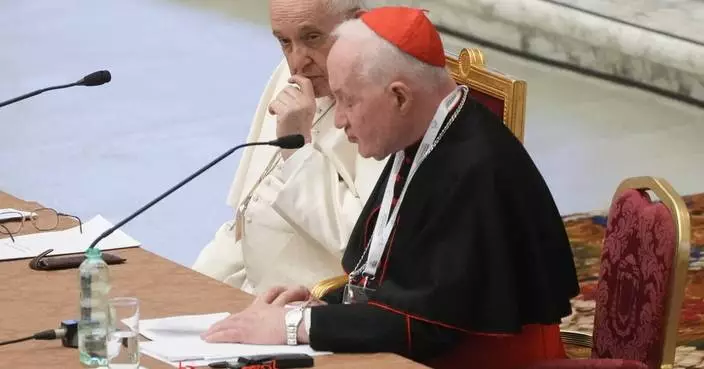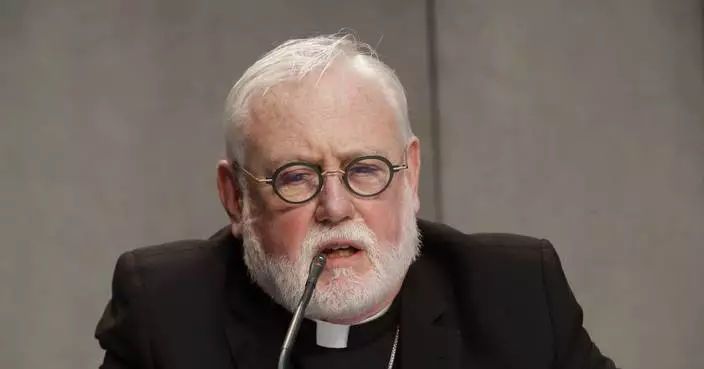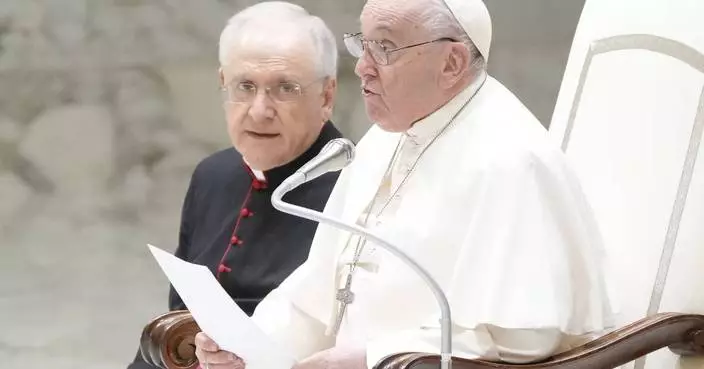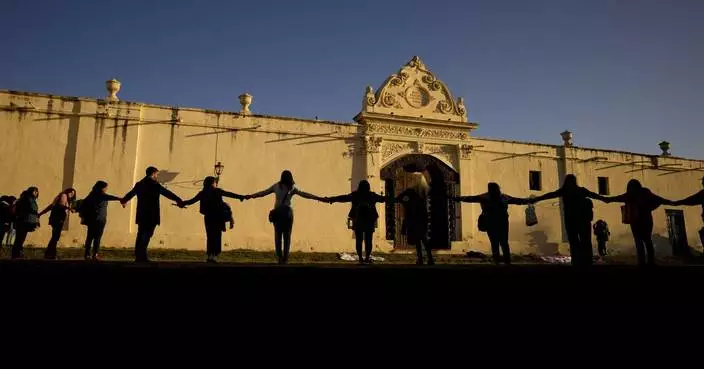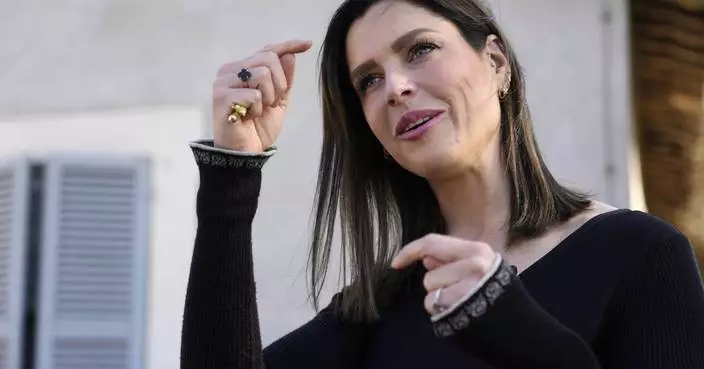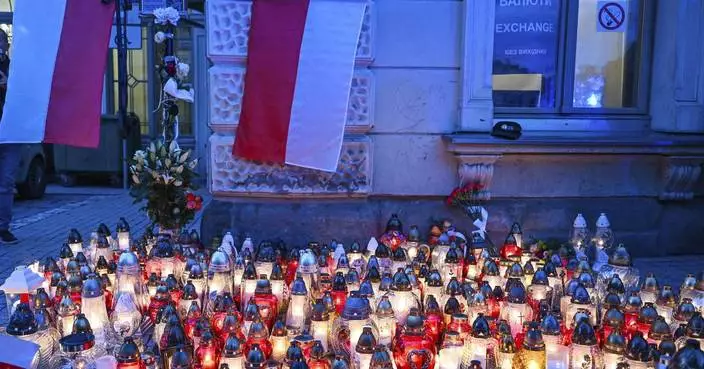The Vatican said Thursday that Pope Francis meets frequently with victims of sexual abuse, seeking to defuse a mounting scandal over his unbridled support for a Chilean bishop accused by victims of witnessing and ignoring their abuse.
Spokesman Greg Burke said Francis meets in private with victims individually or in groups several times a month to "listen to them and try to help them to heal their serious wounds."
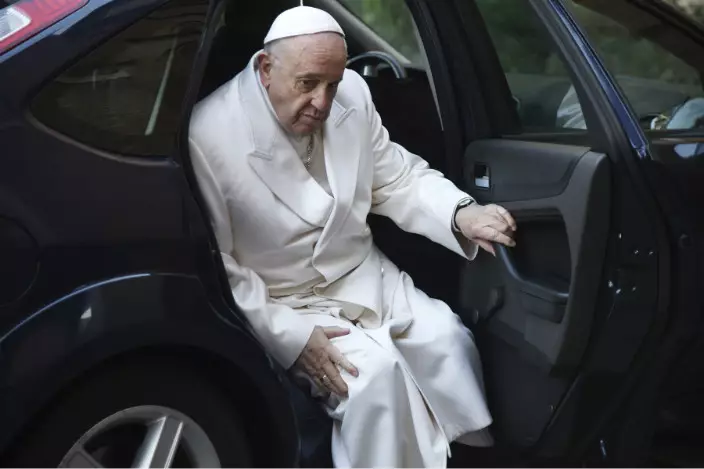
Pope Francis arrives at the Basilica of Saint Anselmo prior to walking in procession to the Basilica of Santa Sabina before the Ash Wednesday mass opening Lent, the forty-day period of abstinence and deprivation for Christians before Holy Week and Easter, Wednesday, Feb. 14, 2018. (Filippo Monteforte/POOL PHOTO via AP)
Yet at least one Chilean abuse victim, Juan Carlos Cruz, wondered if Francis had really heard what they said, given Francis' dismissal of Cruz's complaints that Chilean Bishop Juan Barros covered up his abuse. During a recent trip to Chile, Francis repeatedly called accusations against Barros by Cruz and other victims slander and said he was certain of Barros' innocence.
Cruz said Thursday the problem of clerical abuse is global and has not stopped.
"It should be a priority, and not a false 'zero tolerance,'" he told The Associated Press, echoing Francis' frequent insistence that he has "zero tolerance" for abuse.
After his abuse comments sparked outrage, Francis was forced to do an about-face and send in a Vatican investigator to look into accusations against Barros, a protege of Chile's most notorious predator priest, the Rev. Fernando Karadima.
Archbishop Charles Scicluna, the Vatican's respected former sex crimes investigator, begins his fact-finding mission on Saturday by meeting with Cruz, the main accuser against Barros.
Cruz and two other key whistleblowers have said Barros witnessed their abuse, ignored it and even participated in the psychological abuse that Karadima would then inflict on them when he sensed disobedience or disloyalty.
Barros has denied witnessing any abuse or covering it up.
Francis sparked outrage in 2015 when he appointed Barros, then Chile's military chaplain, to head the diocese of Osorno, Chile, over the objections of some members of the Chilean bishops' conference who were concerned about fallout from Karadima's actions.
Francis has said he overruled their recommendation and rejected Barros' resignation twice because he said he couldn't in good faith remove him when he had no evidence of Barros' wrongdoing.
The AP, however, reported that Francis had received an eight-page letter from Cruz in April 2015 detailing his abuse and how Barros witnessed it and ignored it. Cruz had mailed similar versions of the letter to the pope and his ambassador in Santiago, but never received any response.
On Thursday, asked to respond to revelations of the pope's meetings with abuse victims, Cruz said if Francis truly did listen to victims, he would have learned how much they suffer, particularly when they are mistreated by their own pastors.
"We shouldn't have to wait until the media are banging on the door to do something," he said.
Anne Barrett Doyle, of the online resource database BishopAccountability.org, said the revelation of Francis' frequent meetings with victims raises the question of whether he has a double standard about which types of victims he believes.
"He appears not to listen to victims who expose the complicity of church hierarchs," she said in an email. "His response to those victims is silence or even, as we saw in Chile, counterattack."
Burke's statement revealing Francis' regular encounters with victims coincided with the release Thursday of a transcript of a meeting Francis held with his fellow Jesuits in Chile and Peru during which he said that he met with victims more often than was previously known, often on Fridays.
Francis said the shame of sexual abuse in the church was a "great humiliation."
VENICE, Italy (AP) — A pair of nude feet — dirty, wounded and vulnerable — are painted on the façade of the Venice women’s prison chapel. It's the work of Italian artist Maurizio Cattelan and part of the Vatican’s pavilion at the Venice Biennale contemporary art show in an innovative collaboration between inmates and artists.
That Cattelan is the lead artist is striking, given that his provocative life-size wax statue of Pope John Paul II lying on his side, crushed by a massive meteorite, shocked Catholics when it was displayed at the 2001 Biennale. The new work, titled “Father,” is considered a thematic counterpoint to a performance piece he produced for the 1999 Biennale titled “Mother,” during which a religious ascetic was buried under sand, with only his hands clasped in prayer showing.
The Vatican’s culture minister, Cardinal Jose Tolentino de Mendonca, praised the work, which he said recalled the naked, dirty feet of Caravaggio’s saints, while also being highly symbolic of the journey behind the Holy See’s pavilion, showing “the desire to dirty one’s feet, to show that whoever has feet has a carnality.’’
Tolentino de Mendonca, prefect of the Dicastery for Culture and Education, said the Vatican did not want to shy away from artists or works that might be considered iconoclastic, or critical of institutions like the Catholic church.
“Pope Francis calls us to dialogue. Dialogue is not just with the people who are mirrors of ourselves,’’ he told The Associated Press. “We did not seek out easy artists. We sought real artists. Cattelan’s work is very interesting under a religious point of view, because there is something iconoclastic in his work, but also in the mystic there is something that can be called iconoclastic, in the sense of deconstructing the religious representation.’’
Pope Francis, who met with over 200 artists in the Sistine Chapel last year, will see for himself when he visits the pavilion April 28, meeting inmates and artists, and according to the prefect not just the ones participating in the pavilion.
Cattelan, who wandered by the work as preview tours continued this week, declined to discuss his contribution but said the feet would be reproduced on a church in Rome in the future.
Cattelan’s artwork can be viewed by anyone who makes the trek to the Giudecca island prison. Those who want to see the other works will be guided through the prison on four daily tours by inmates, leaving bags and mobile phones in lockup.
Closed Wednesdays, a maximum 600 people will view the pavilion each week during the Biennale's run from April 20-Nov. 26. The 60th International Art Exhibition comprises 88 national pavilion s along with a main show curated this year by Brazilian Adriano Pedrosa.
On a recent tour, three inmates wearing elegant black and white smocks made by prison seamstresses guided journalists through an installation by Simone Fattal who transformed inmates’ poems into small ceramic plaques hung along a brick alleyway.
The tour continued to a prison coffee bar decorated with posters by onetime Catholic nun Corita Kent and into a gallery where Claire Tabouret has painted images from photographs provided by inmates of themselves and loved ones.
The conceptual artistic duo known as Claire Fontaine provided a neon eye with a slash through it for an outdoor corridor, and another neon sign that reads: “Siamo con voi nella notte," (“We are with all of you in the night”).
That sign, in a courtyard where the inmates can gather during the day, provides a reassuring blue glow into the overlooking cells where they sleep.
“When we read this writing, it gives us encouragement, because there is someone with us day and night,” said one inmate named Manuela, who like the others declined to give their full names. “At night, we see the blue light, so we know it is there.”
The tour ended with a 15-minute film by Italian director Marco Perego starring his wife, actor Zoe Saldana, both of whom tagged along. Saldana plays an inmate in her final hours before release, and she took inspiration from the inmates who appeared in the film. To protect their privacy, the film can only be seen within the prison walls.
“What we wanted to provide for them was just a little bit of visibility, and to add a little bit of levity through art, which is exactly what we accomplished,’’ Saldana said.
Their desire for visibility was expressed in letters that the women gave the couple each night after filming, and through requests to pose with the couple for photos, which Saldana said they printed as keepsakes for the women.
Chiara Parisi, the director of the Centre Pompidou-Metz and one of the curators, said the project created a unique synergy between artists and inmates that opened lines of empathy. After the pavilion closes at the end of the Biennale, she said a coat of paint would likely cover Cattelan’s work, while the other pieces will find other venues; she said she hoped its larger legacy would be other similar initiatives.
“Through this pavilion, we hope to truly demonstrate the desire for freedom, the work to get out, to be free is something essential," Parisi told AP. “Detention is a moment in their lives, and the artists say so, they themselves say so. Just a moment, a photograph, that should not impact what comes after, should not prejudice their future lives.”
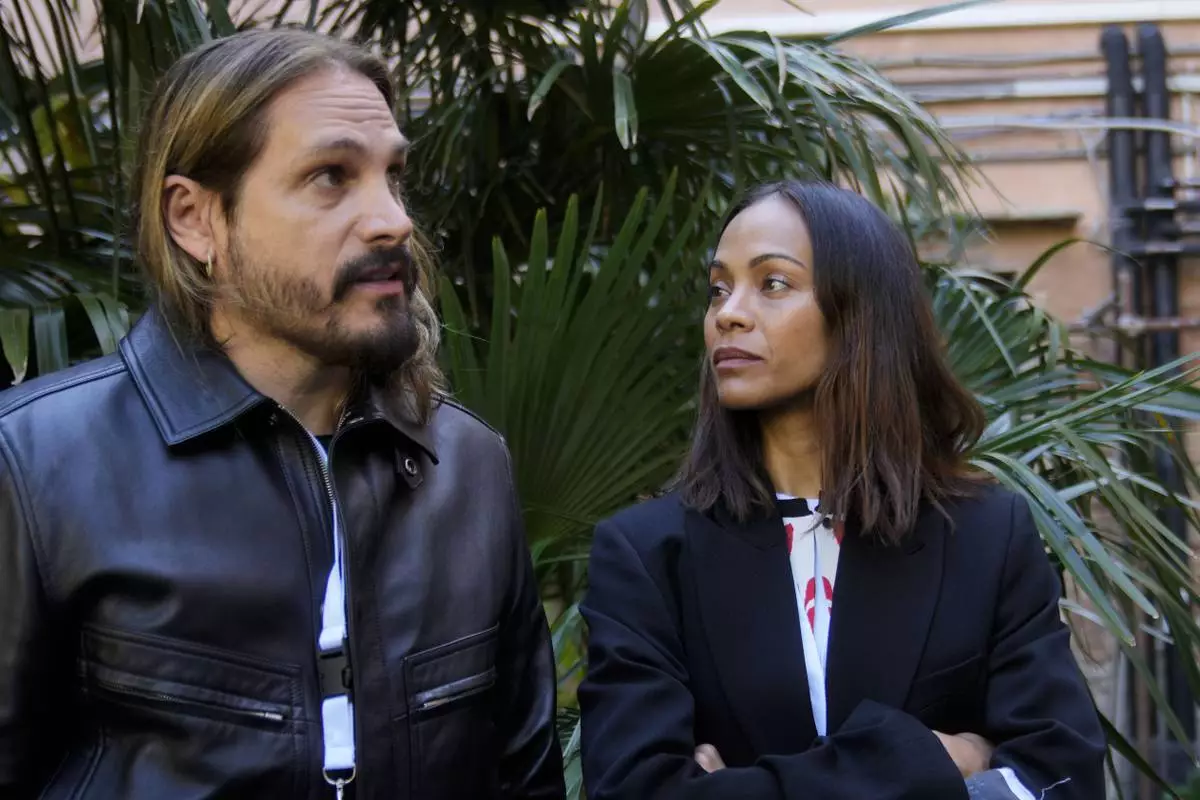
U.S. actress Zoe Saldana looks to her husband and movie director Marco Perego during press preview inside the women's prison at the Giudecca island during the 60th Biennale of Arts exhibition in Venice, Italy, Wednesday, April 17, 2024. A pair of nude feet dirty, wounded and vulnerable are painted on the façade of the Venice women's prison chapel, the work of Italian artist Maurizio Cattelan and part of the Vatican's pavilion at the Venice Biennale in an innovative collaboration between inmates and artists. (AP Photo/Luca Bruno)
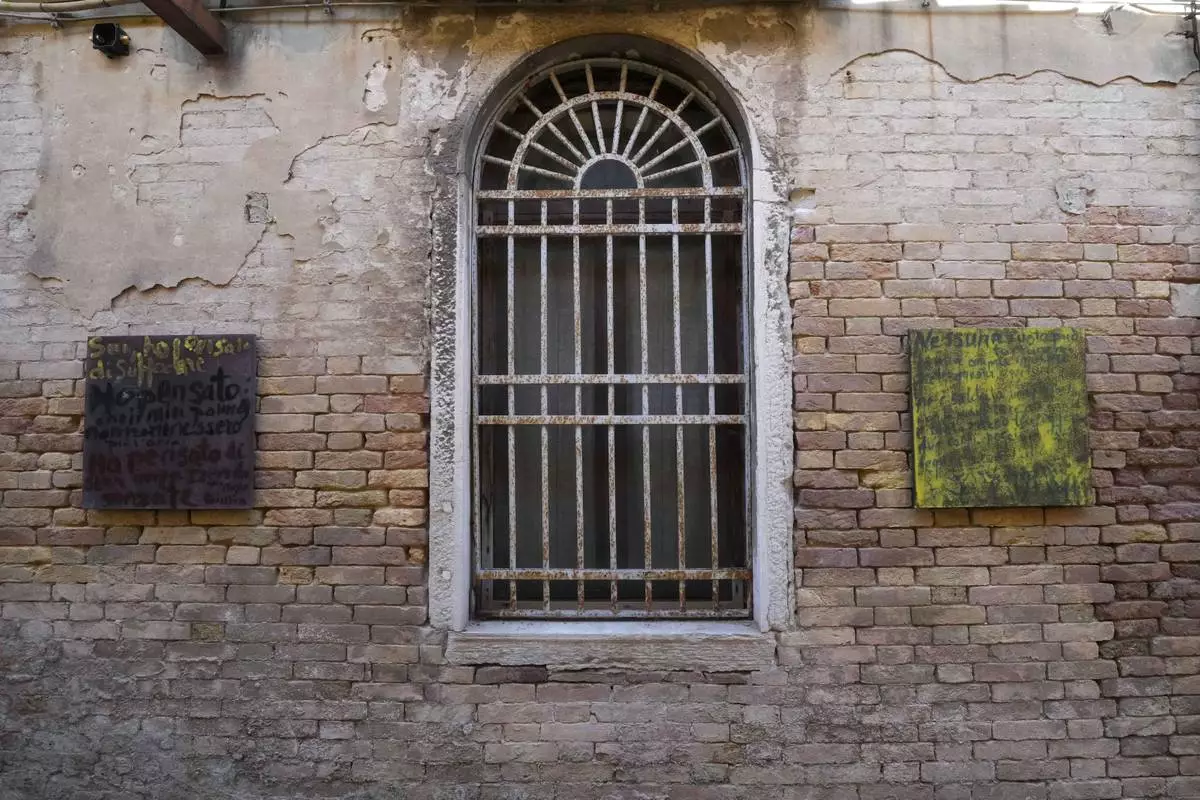
An installation by artist Simone Fattal is displayed inside the women's prison at the Giudecca island during the 60th Biennale of Arts exhibition in Venice, Italy, Wednesday, April 17, 2024. A pair of nude feet dirty, wounded and vulnerable are painted on the façade of the Venice women's prison chapel, the work of Italian artist Maurizio Cattelan and part of the Vatican's pavilion at the Venice Biennale in an innovative collaboration between inmates and artists. (AP Photo/Luca Bruno)

An installation by artist Claire Tabouret is displayed inside the women's prison of he Giudecca island during the 60th Biennale of Arts exhibition in Venice, Italy, Wednesday, April 17, 2024. A pair of nude feet dirty, wounded and vulnerable are painted on the façade of the Venice women's prison chapel, the work of Italian artist Maurizio Cattelan and part of the Vatican's pavilion at the Venice Biennale in an innovative collaboration between inmates and artists. (AP Photo/Luca Bruno)
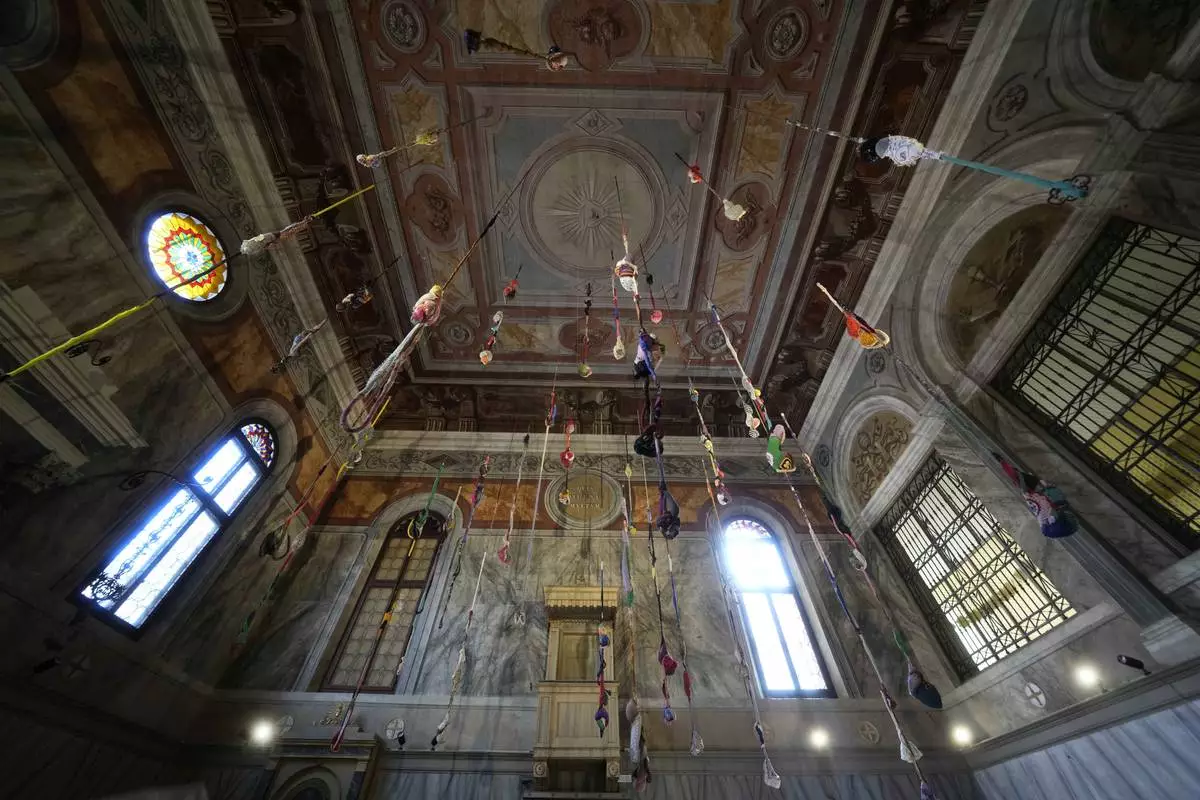
An installation by artist Sonia Gomes is displayed inside the church Santa Maria Maddalena Convertita at the women's prison of he Giudecca island during the 60th Biennale of Arts exhibition in Venice, Italy, Wednesday, April 17, 2024. A pair of nude feet dirty, wounded and vulnerable are painted on the façade of the Venice women's prison chapel, the work of Italian artist Maurizio Cattelan and part of the Vatican's pavilion at the Venice Biennale in an innovative collaboration between inmates and artists. (AP Photo/Luca Bruno)

An installation by artist Sonia Gomes is displayed inside the church Santa Maria Maddalena Convertita at the women's prison of he Giudecca island during the 60th Biennale of Arts exhibition in Venice, Italy, Wednesday, April 17, 2024. A pair of nude feet dirty, wounded and vulnerable are painted on the façade of the Venice women's prison chapel, the work of Italian artist Maurizio Cattelan and part of the Vatican's pavilion at the Venice Biennale in an innovative collaboration between inmates and artists. (AP Photo/Luca Bruno)
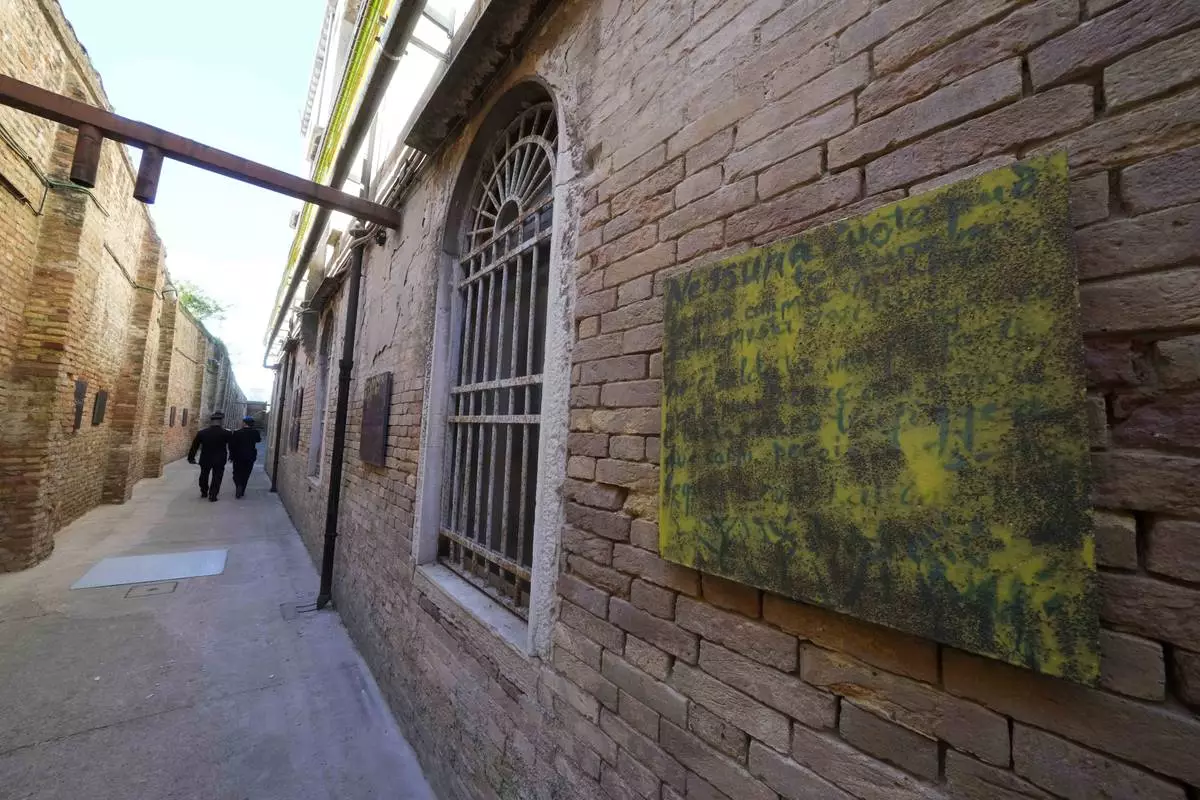
An installation by artist Simone Fattal is displayed inside the women's prison at the Giudecca island during the 60th Biennale of Arts exhibition in Venice, Italy, Wednesday, April 17, 2024. A pair of nude feet dirty, wounded and vulnerable are painted on the façade of the Venice women's prison chapel, the work of Italian artist Maurizio Cattelan and part of the Vatican's pavilion at the Venice Biennale in an innovative collaboration between inmates and artists. (AP Photo/Luca Bruno)
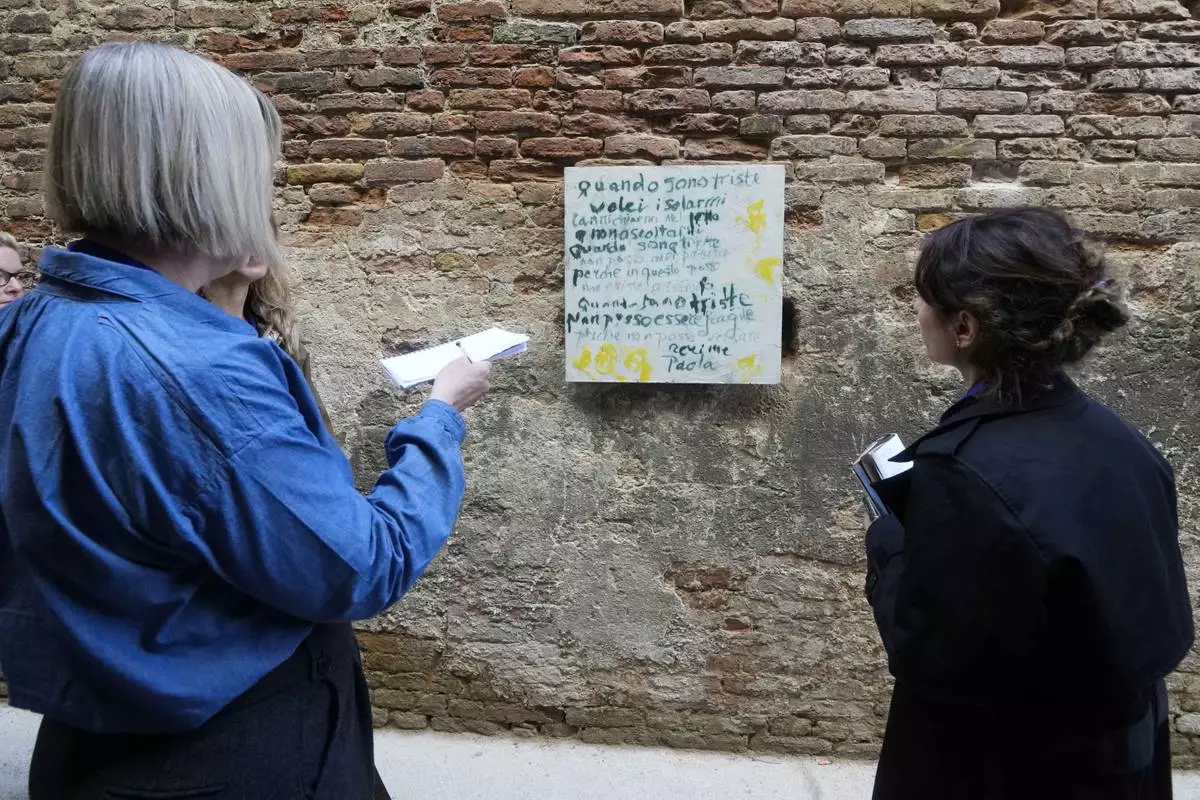
Reporters watches an installation by artist Corita Kent displayed inside the women's prison at the Giudecca island during the 60th Biennale of Arts exhibition in Venice, Italy, Wednesday, April 17, 2024. A pair of nude feet dirty, wounded and vulnerable are painted on the façade of the Venice women's prison chapel, the work of Italian artist Maurizio Cattelan and part of the Vatican's pavilion at the Venice Biennale in an innovative collaboration between inmates and artists. (AP Photo/Luca Bruno)
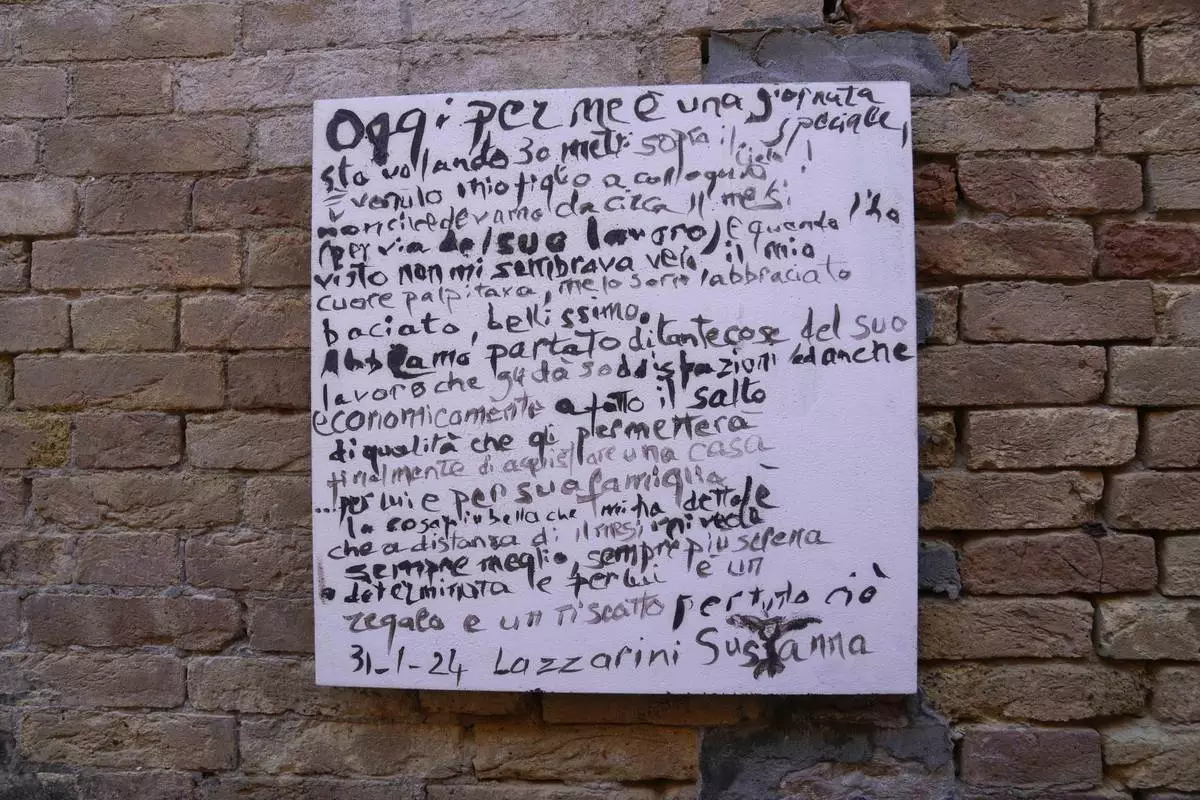
An installation by artist Simone Fattal is displayed inside the women's prison at the Giudecca island during the 60th Biennale of Arts exhibition in Venice, Italy, Wednesday, April 17, 2024. A pair of nude feet dirty, wounded and vulnerable are painted on the façade of the Venice women's prison chapel, the work of Italian artist Maurizio Cattelan and part of the Vatican's pavilion at the Venice Biennale in an innovative collaboration between inmates and artists. (AP Photo/Luca Bruno)
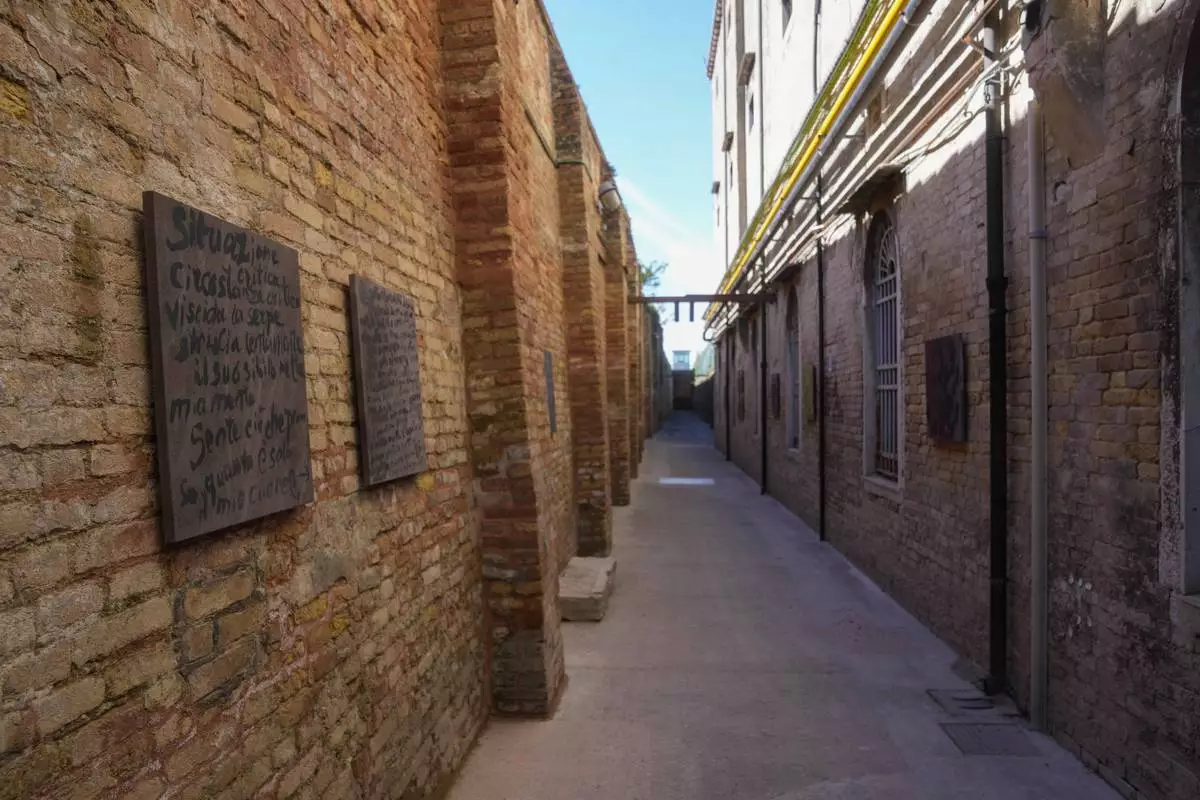
An installation by artist Simone Fattal is displayed inside the women's prison at the Giudecca island during the 60th Biennale of Arts exhibition in Venice, Italy, Wednesday, April 17, 2024. A pair of nude feet dirty, wounded and vulnerable are painted on the façade of the Venice women's prison chapel, the work of Italian artist Maurizio Cattelan and part of the Vatican's pavilion at the Venice Biennale in an innovative collaboration between inmates and artists. (AP Photo/Luca Bruno)
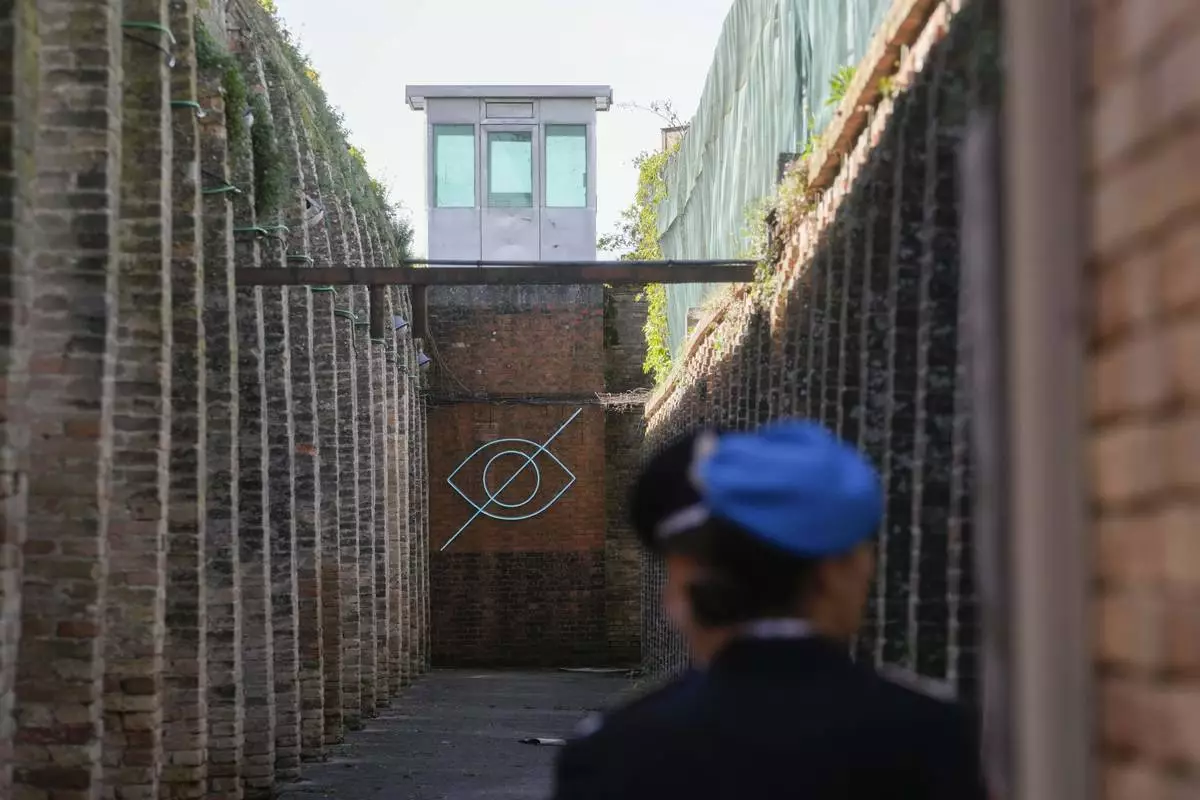
The installation 'White Sight' by artist Claire Fontaine is displayed inside the women's prison at the Giudecca island during the 60th Biennale of Arts exhibition in Venice, Italy, Wednesday, April 17, 2024. A pair of nude feet dirty, wounded and vulnerable are painted on the façade of the Venice women's prison chapel, the work of Italian artist Maurizio Cattelan and part of the Vatican's pavilion at the Venice Biennale in an innovative collaboration between inmates and artists. (AP Photo/Luca Bruno)
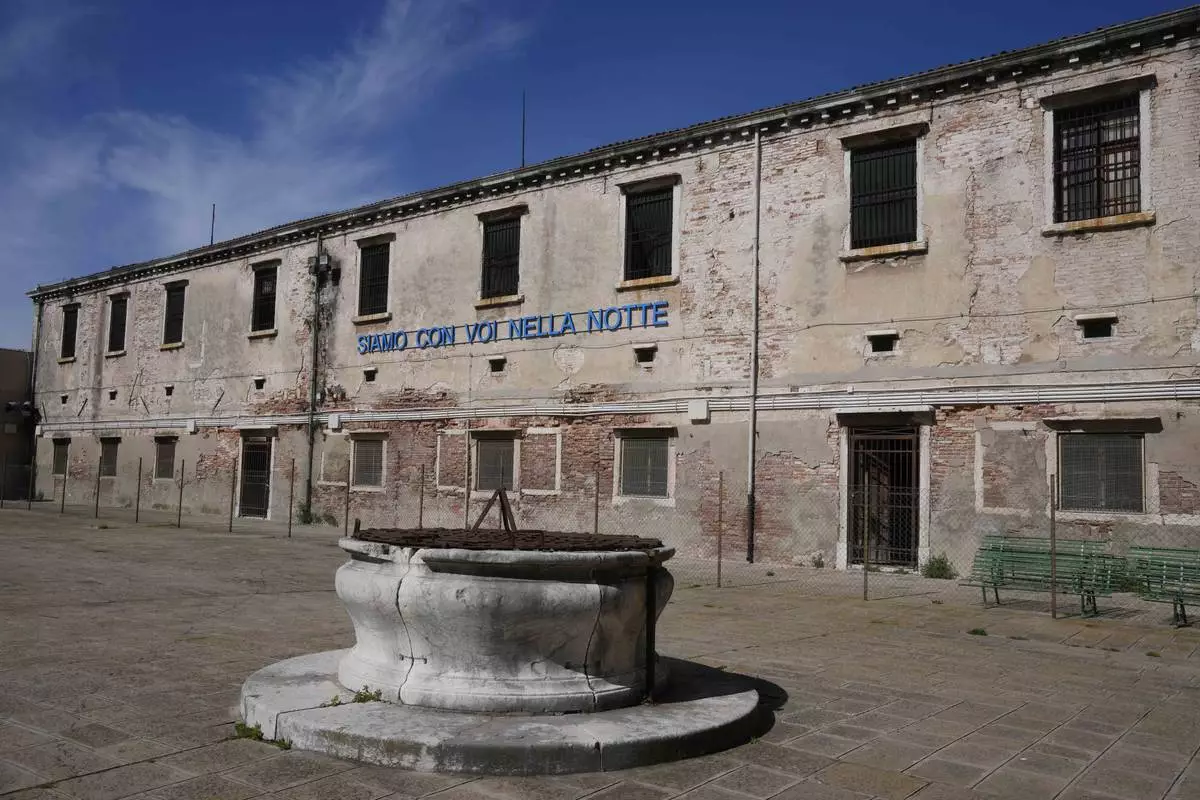
The installation 'Siamo con voi nella notte' (We are with you overnight) by artist Claire Fontaine is displayed inside the women's prison at the Giudecca island during the 60th Biennale of Arts exhibition in Venice, Italy, Wednesday, April 17, 2024. A pair of nude feet dirty, wounded and vulnerable are painted on the façade of the Venice women's prison chapel, the work of Italian artist Maurizio Cattelan and part of the Vatican's pavilion at the Venice Biennale in an innovative collaboration between inmates and artists. (AP Photo/Luca Bruno)
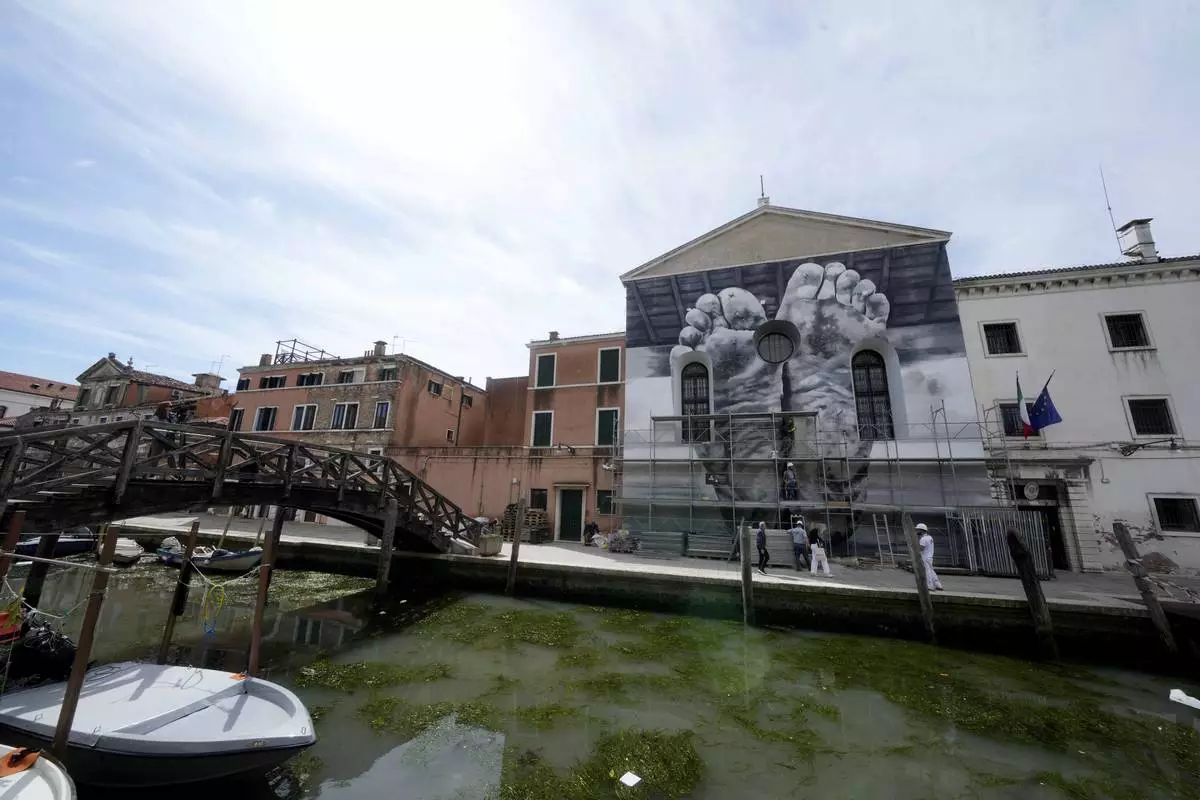
The installation '"I piedi, insieme al cuore, portano la stanchezza e il peso della vita" ('The feet, together with the heart, carry the tiredness and weight of life') by Italian artist Maurizio Catalan is displayed on the facade of the church next to the women's prison at the Giudecca island during the 60th Biennale of Arts exhibition in Venice, Italy, Wednesday, April 17, 2024. A pair of nude feet dirty, wounded and vulnerable are painted on the façade of the Venice women's prison chapel, the work of Italian artist Maurizio Cattelan and part of the Vatican's pavilion at the Venice Biennale in an innovative collaboration between inmates and artists. (AP Photo/Luca Bruno)

















